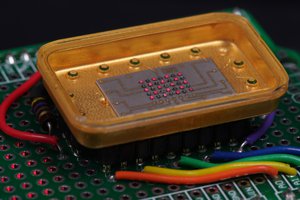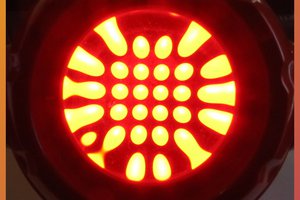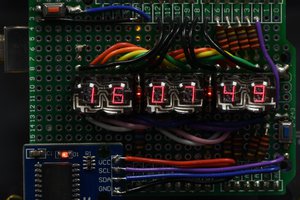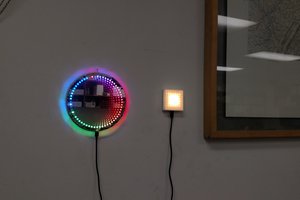I am fascinated by the history of technological development of LEDs and displays. HDSP-2000 dot matrix LED displays were introduced by Hewlett Packard in the late 1970s and represented a breakthrough in LED display technology of the era, by providing compact, versatile communication interfaces between humans and machines. Different variants of HDSP-2000 displays featured in some of HP's early calculators and computers; they are built to an extremely high standard, intended for high reliability applications and often found in military and avionics hardware. Later versions of the display manufactured by Siemens/Osram used plastic epoxy construction, but are still expensive compared to LCD displays.
HDSP-2000 display chips are constructed from ceramic gold and glass, there are 4 matrices of 5x7 LEDs (total 140 LEDs) driven by on-board shift register integrated circuits (28 bits of data to drive the 4 rows of 7 LEDs). They are capable of displaying alphanumeric characters and custom fonts and can also be daisy chained. However, unlike the HP 5082-7300 BCD and DL2416 ”smart” hybrid LED displays, HDSP-2000 do not have memory and character decoders - this has to be done externally using a micro controller and the 5 columns require a relatively high current to operate, accomplished using an external 5 transistor array.
More information, photographs and code will be added soon...
 Patrick Hickey
Patrick Hickey



 Alain Mauer
Alain Mauer

 jareklupinski
jareklupinski
I have some of these displays and had set up a test with a PIC and UDN2981 for the columns and a 2ms on time. Running at 5v with a drop in the UDN2981 seems to be what the datasheet calls for on the columns. With this setup, the displays seem very dim compared to commercial devices I have seen that use these displays. Did you have this experience?
The data sheet recommends running the columns below 3.5 volts, I assume to reduce the heat from the onboard sink drivers but the display seems to really need more voltage on the columns.